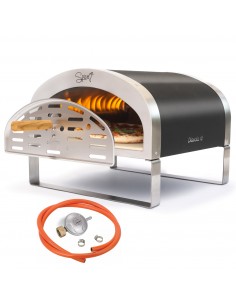- Spice
- Insights
- 6872 views
- 0 comments

Dealing with pizza dough that doesn't rise can be a source of frustration for many cooking enthusiasts. However, this drawback is often the result of various factors, many of which can be easily corrected. Below, we present a list of the most common causes why pizza dough may not rise adequately, accompanied by detailed explanations and advice on how to avoid them.
Inactive or expired yeast: Yeast plays a fundamental role in the leavening process. If it is expired or not stored properly, it may lose its ability to ferment, preventing the dough from puffing up.
Incorrect water temperature: Water that is too cold slows down the activity of the yeast, while water that is too hot (over 50°C) can kill it. The ideal temperature range to activate the yeast is between 35°C and 43°C.
Unsuitable environment: Environmental temperature and humidity significantly influence leavening. A cold environment can delay the process, so it is best to let the dough rise in a warm and not excessively dry place.
Too little yeast: Too little yeast can cause inadequate leavening. Following the recipe carefully and adjusting the amount of yeast based on the volume of the other ingredients is crucial.
Inadequate dough consistency: Moisture balance in the dough is essential. A dough that is too dry can hinder the activation of the yeast, while a dough that is too wet can dilute it excessively, compromising leavening.
Direct contact between salt and yeast: Salt can inhibit the activity of yeast if it comes into direct contact with it. Mixing the salt with the flour first and then adding yeast and water is a recommended practice.
Proving too short: In some cases, the dough simply takes longer to rise, especially if the environment is not ideal or if you opt for a slow fermentation using less yeast.
Cold ingredients: Using cold ingredients can lower the temperature of the dough and slow its rising. Preferring ingredients at room temperature is a good idea.
Low-protein flour: Flours with less protein (and therefore less gluten) may not effectively retain the gases produced by the yeast, resulting in insufficient leavening.
Excessive or insufficient kneading: Over-worked dough can damage the gluten network, while insufficiently worked dough may not develop it adequately, negatively influencing leavening.
Recognizing and modifying these aspects can significantly improve the leavening of pizza dough, leading to satisfying and delicious results. With a little attention and practice, you can enjoy perfect homemade pizza every time.









Comments (0)
New comment